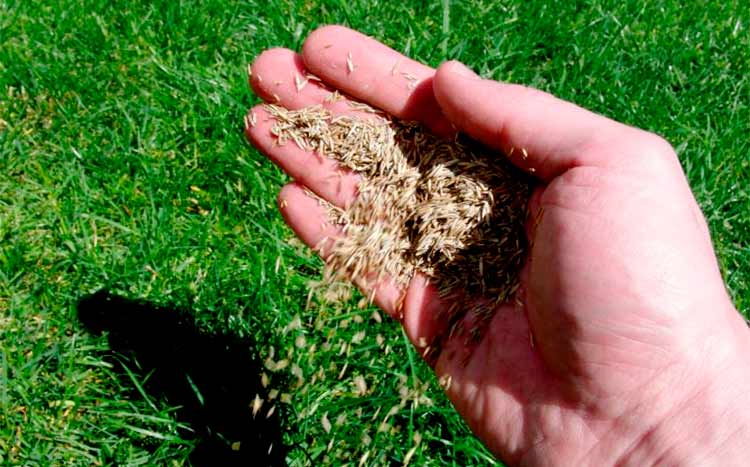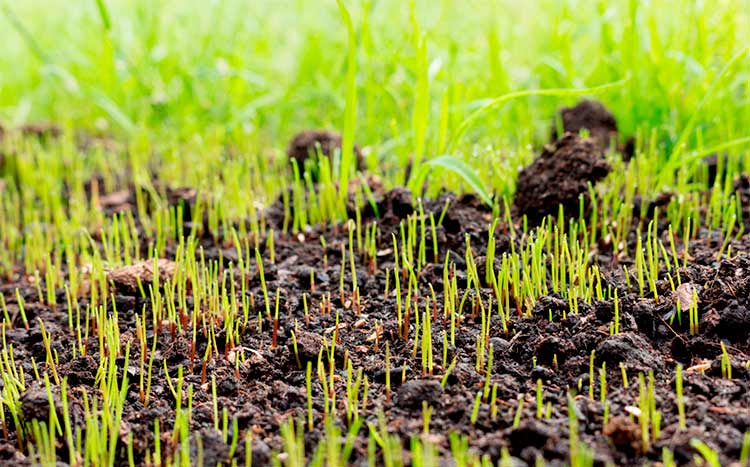Most homeowners who have a lawn are familiar with the fundamentals of lawn maintenance. However, many may not be aware of lawn seeding or overseeding. This method can assist in maintaining a luxurious and lush lawn throughout the year.
The best time to overseed your lawn will depend on a number of factors. These include the type of grass you have growing in your lawn, the climatic conditions in the area which you live, and the level of usage that your lawn undergoes.
These considerations aside, the basics of lawn overseeing remain the same, no matter where you live or what type of grass you have. It is important to understand the conditions that your lawn is growing in however so that you are able to overseed your lawn efficiently and effectively.
What is lawn overseeding?
In basic terms, lawn overseeding is when you spread grass seed over an existing lawn. It can help extend the life of your lawn and prevent thinning or bare patches from cropping up on your lawn.
Lawn overseeding can be done in small sections as needed, or over your whole lawn as part of regular care and maintenance.

How often to overseed your lawn
The frequency with which you will need to overseed your lawn will depend upon your own individual circumstances, and the nature and condition of your lawn.
In the vast majority of circumstances, a once-yearly overseeding is sufficient to keep your lawn looking lush and healthy.
If your lawn gets a lot of heavy usages, such as vehicles being driven over it, or a large family using the lawn on a daily basis, you may need to overseed your lawn up to twice yearly.
Whether you are overseeding your lawn once a year or a couple of times a year, timing is critical to maximizing the efficacy of your overseeding efforts!

When should I overseed my lawn?
Timing is critical when it comes to seeding your lawn. You are aiming to maximize the seed’s natural growth with its most active growing season. This growing season will differ depending on the type of grass you have a growing and whether you live in a cold or warm climate.
If you live in a warmer climate and are growing warm-season grasses such as Bermudagrass, then your optimal overseeding time will be in late spring or early summer, just before these types of grasses are due to hit their peak growth.
Similarly, as cool-season grasses hit their growth strides in early fall, it is best to be overseed toward the end of summer or the start of fall. Cool-season grasses include Kentucky Bluegrass and ryegrass.
Can I overseed my lawn in summer?
In order to make the most of your overseeding efforts, you should avoid overseeding your lawn at the peak of summer. This is not an optimal growing time for either warm-season or cool-season grasses (it is too late for warm-season grass, and too early for cool-season grass).
If you live in a southern climate and have warm-season grass growing in your lawn, you can overseed in early summer. If you live in a more northern climate and favor cool-season grasses, the end of summer is an ideal overseeding time.
Why overseed your lawn?
There are several benefits to overseeding your lawn, regardless of the type of grass you have growing.
First among these is that regular overseeding can help extend the life and longevity of your lawn. It will look fuller and lusher and will minimize the need to perform intensive lawn revitalization and fertilization down the track. It can help smooth over any areas of your lawn that may be thinning and becoming unsightly.
Overseeding can also help improve the long-term health of your lawn. Regular overseeding can help your lawn withstand disease and insect infestations, and can also help it endure tough conditions such as drought or flooding.
Lawn overseeding can also help you save money on the upkeep of your lawn in the long run. Without the need for regular pesticide treatments and fertilization, a properly overseeded lawn can remain green, vibrant, and healthy for much longer.
How to overseed your lawn
Overseeding your lawn is a relatively simple process, and the initial effort required will help save you time and money in the long run.
If your lawn requires dethatching, dethatch it
A lawn that needs dethatching will not support your overseeding efforts as effectively or efficiently. This step can be skipped if your lawn does not have excessive amounts of thatch.
Mow your lawn as short as possible
Mowing your lawn short prior to overseeding will allow the news seeds greater access to the soil and will promote faster, more effective germination.
Aerate or rake your lawn
Aerating or raking your lawn can help improve the health of your soil prior to overseeding. It can also help remove any dead grass or other debris that might impede your overseeding efforts.
Spread your seed
Fill up your seed spreader, and get to work! You will have already chosen the best seed spreader for your lawn, and now simply need to follow the instructions that have come with your grass seed!
Feed, water, fertilize
Don’t let all your careful overseeding efforts go to waste by neglecting your lawn now. It is important to feed and nourish your grass seed so that it can make the most of the growing season and help thicken out your lawn. Spread a fertilizer over your lawn once you have overseeded, and keep the soil moist by watering your lawn on a daily basis, until your seedlings have reached the same height as the rest of your lawn.
Use this FREE service
Does all this sound a bit too much for you? Would you prefer to enlist the help of a professional?
HomeGardenGuides.com is a free service that quickly matches you with top-voted local lawn specialists, who can advise you on professional lawn seeding and overseeding services.
You can get 3 estimates fast by real certified experts in your area in just 2 minutes.
- Scroll to the top of the page and enter your zip code.
- Answer questions about your lawn seeding job
- Your details are forwarded to three local experts. They will send you a price estimate for the job and some friendly advice.
IMPORTANT: There is no obligation to hire. This is a free tool and service to be used at your pleasure.

FAQ's
Can I just sprinkle grass seed on my lawn?
If you want to overseed a small section of lawn, then spreading grass by hand can be much more simple and easy then hiring or buying a seeder.
If you have a larger lawn, however, spreading grass seeds by hand can be somewhat time consuming and ineffective.
Regardless of whether you want to seed by hand or use a specialized seeder, there are a few steps you will need to take to ensure that your grass seed takes root, and that your overseeding efforts will not be wasted!
Cutting your grass, raking your lawn, adding a layer of additional soil, and even aeration and dethatching can help improve the results of your overseeding.
Is overseeding my lawn worth it?
When done properly, overseeding can have many benefits for your lawn beyond simply providing extra coverage. Overseeding comes with a whole host of benefits, and is definitely worth doing if you are interested in the long term health of your lawn.
Overseeding can reduce the need for and frequency of costly lawn upkeep such as pesticide application and fertilization. It can also help your lawn withstand tough climatic conditions such as flooding or drought.
Do I need to aerate my lawn first before I overseed it?
Aerating your lawn before you begin the overseeding process can help increase the efficacy of overseeding. Aeration allows for the deeper penetration of nutrients, water, and sunlight into your soil, which can help boost soil and lawn health.
The exact method of aeration will differ depending on the state of your lawn and the type of grass you have growing. Sometimes, a simple raking will suffice, and in other circumstances, you may need to use spike aeration.
Should I dethatch my lawn first before I overseed it?
If your lawn requires dethatching, you should do this before overseeding. Not all lawns require this additional step, however, so it is important to ascertain whether you actually need to dethatch before doing this!
You can tell if your lawn requires dethatching simply by trying to poke a finger down into the soil. If your lawn feels hard, compact, and tough, then you will most likely need to dethatch.
Similar to aeration, dethatching a lawn allows for nutrients, water, and sunlight to penetrate into the soil. This improves a whole host of things for your lawn, from better root health to fewer insect infestations. It will also mean that your overseeding efforts will be much more effective in the long run.






